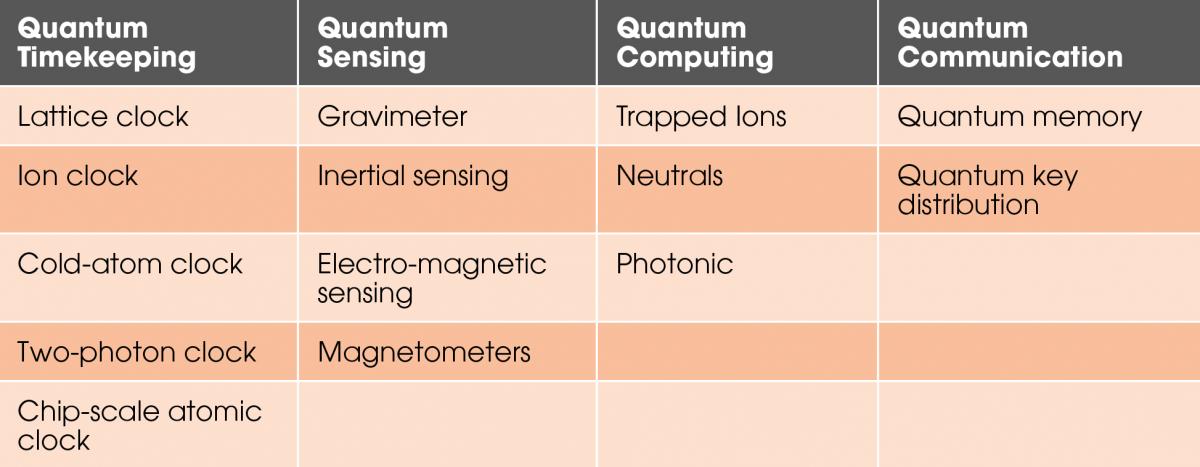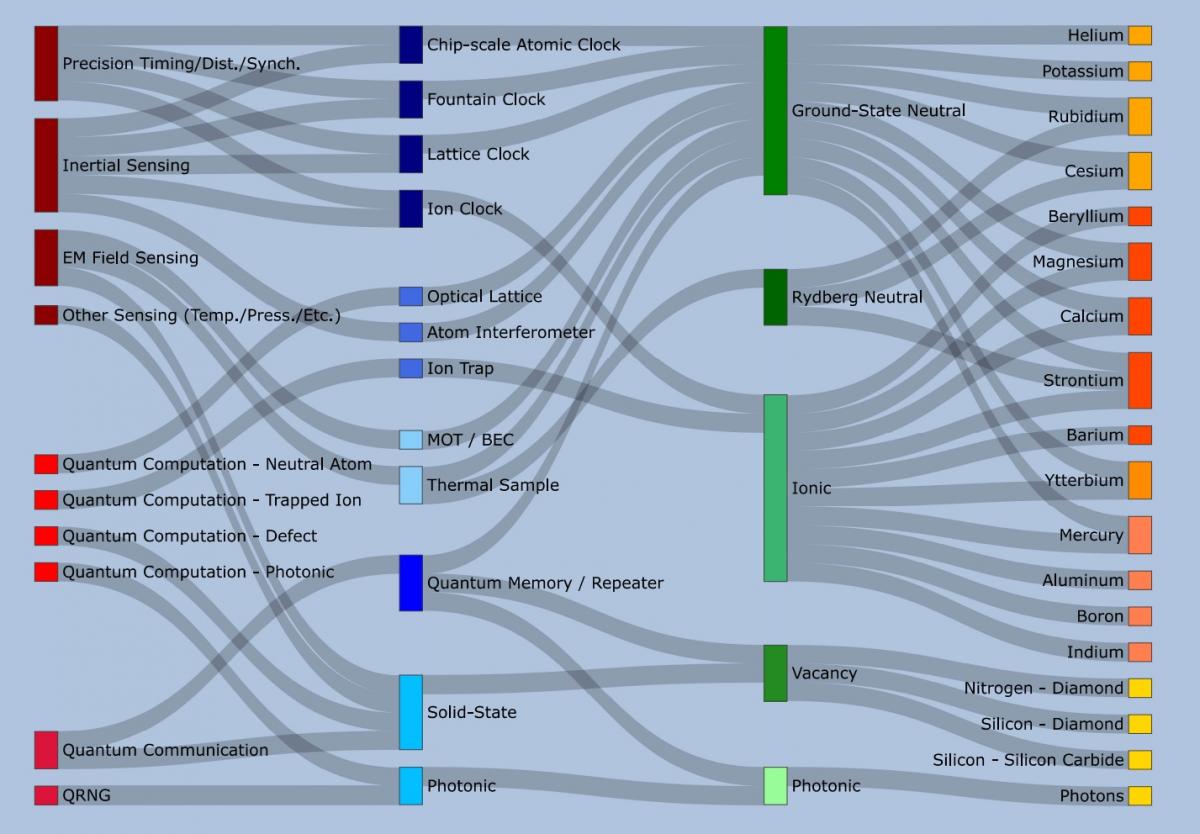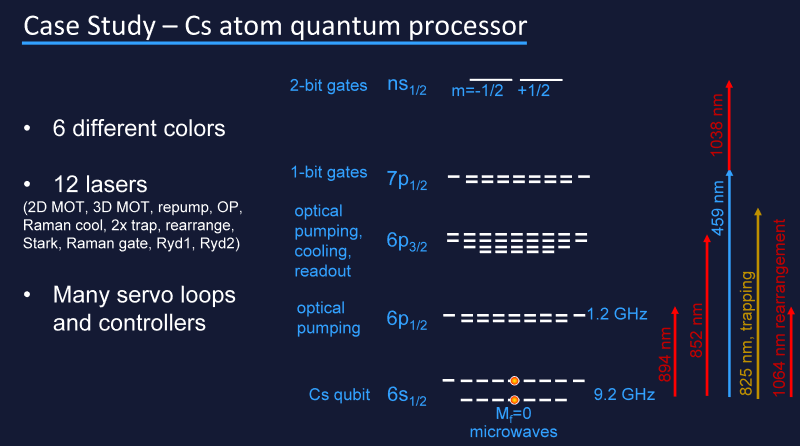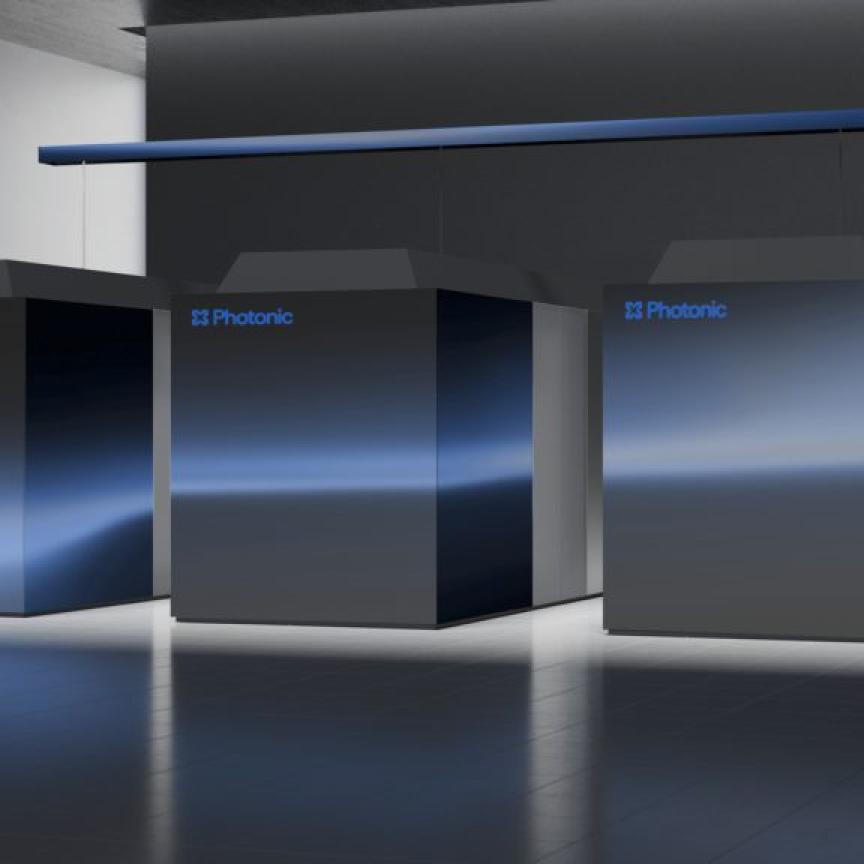Photons are fundamental to quantum information science and technology (QIST), so it is not surprising that lasers are critical components of many QIST-based systems (Table 1). Lasers are essential elements of quantum computers based on trapped ions, neutral atoms, and photons. They enable novel sensors with unprecedented sensitivity and leap-ahead capabilities such as improved short-term and long-term holdover time for positioning, navigation, and timing, especially in GPS-denied situations. They are also key to the distribution of quantum information between quantum systems.
Laser manufacturers are taking note of the growing QIST market for their products, but also see challenges that need to be overcome.
The Quantum Economic Development Consortium (QED-C) is an industry-driven consortium of stakeholders, including many of the leading suppliers of lasers to the QIST community1. The consortium has the objective of identifying enabling technology gaps and addressing those gaps. Lasers are among the top bottlenecks to scaling certain quantum systems and enabling applications of QIST. In 2020, QED-C held a workshop on quantum-enabling laser technologies. This article is based on the findings of the workshop.
However, many applications come with extremely specific requirements of the optical fields, including various wavelengths, output powers, and linewidths. The specifications are varied and, often, technically challenging, but the economic and societal potential is substantial2. However, the QIST industry is in the early stages of development, and a mature laser supply chain to meet the industry’s special requirements does not exist. QIST system developers must rely either on small- volume, high-cost development at small- and mid-sized companies, or on commercially available lasers developed for other applications. According to industry expert and QED-C member Mark Wippich, CEO of MPW: “We are at the beginning of seeing the full potential of quantum computing, quantum sensing, quantum timing, and quantum networking, but only after we have solved the laser-related issues.”

Table 1: Examples of quantum systems currently under development or being manufactured today that are enabled by lasers
The diversity of QIST applications and associated lasers is shown schematically in Figure 1. The map connects end-use applications (column 1), sub-systems (column 2), excitation states (column 3), and species (column 4) in QIST. Connections are only valid between adjacent columns. For example, fountain clocks employ ground-state neutral atoms but not all the species that are used are in the ground state. As can be seen, there are significant overlaps in the techniques used to achieve a particular goal. The figure illustrates the breadth of “chemistry” (atom species) that have been at least demonstrated in one or more QIST applications. The figure does not reveal which species are of broadest utility.
Although lasers are an enabling component in many quantum systems, the current supply chain, use cases, laser architectures, material systems and requirements are diverse. The vastness and complexity of this landscape inhibit progress. There are over 17 atomic species being explored for various quantum applications, corresponding to more than 100 different laser wavelengths. To meet these requirements, a large variety of laser gain media and laser architectures are currently used, each with its own pros and cons.
User perspective
Neutral atom and ion-based systems are a critical component for many quantum applications, and lasers are essential to their operation. Lasers are used to induce transitions between the quantised energy levels of the atom or ion and perform functions such as optical pumping, generation of coherences between levels, trapping and cooling, and final state readout. For example, a quantum computer utilising neutral caesium atoms requires 12 different lasers to produce six different colours, as shown in Figure 2. In addition to specific wavelength requirements, other specifications include power, polarisation, transverse mode aspect ratio, linewidth, tunability, noise, and frequency stability.
Vendor perspective
While research activity is high, commercial quantum-based laser markets are small compared with industrial or classical communication markets and are largely still in the future. Therefore, the motivation to support large investments by laser manufacturers and suppliers to meet the development needs of quantum users is simply not present. As a result, often no commercial option is available and lasers for quantum applications are homebuilt, research grade (not optimised for SWaP-C or reliability) or repurposed lasers designed for other applications.

Figure 1: Map of the most common configurations in quantum technology from use-case on the left to atomic species on the right. Connections are only valid between adjacent columns
No single laser-gain material system or laser architecture meets all potential requirements being explored for QIST systems. Myriad architectures have been used by researchers and developers of QIST systems, including: semiconductor diodes; Fabry-Perot diodes; single frequency diodes such as distributed Bragg reflector (DBR), distributed feedback (DFB), external-cavity lasers (ECDL) and volume holographic grating (VHG); vertical cavity surface emitting lasers (VCSEL), fibre lasers, quantum cascade, tapered amplifier, various III-V semiconductor lasers, vertical external cavity semiconductor laser (VESCEL), optical frequency combs, and dye lasers.
The path to sustainable quantum-enabling laser markets
There is a disconnect between the desire for unbounded diversity of lasers among researchers and the need for economical sustainability among vendors. Today’s QIST performance requirements are beyond those for other mass-market lasers, e.g. telecom, and the current markets are smaller, with unclear timelines for future growth.
With more than 100 different wavelengths from the VUV through IR associated with potential quantum-based systems/applications, and multiple requirements for power and linewidths, prioritisation is a must for the laser makers to deliver economically viable products for quantum.
Quantum sensing, metrology, and advanced clocks have the closest production timelines. Bringing these technologies to maturity will benefit quantum computing and quantum networking in the long run. In most quantum sensing use cases, customer and government investments are needed to support laser development in the short-term.

Figure 2: An example of laser wavelength needs for quantum applications based on neutral cesium atoms
However, near-term quantum sensing R&D and application markets are not large enough to sustain a focused supply chain alone. Vendors must rely on other adjacent markets to sustain fabrication capacities and competitiveness. Adjacent market possibilities include biomedical imaging, THz for medical and material imaging, automotive lidar, telecoms, and laser-based consumer products. Again, government support can play an important role in the early adoption of lasers as an enabling technology in these fields.
Progress toward a more robust supply chain for quantum applications would be accelerated by assessing and prioritising among the many proposed laser technologies. For laser suppliers, the myriad requirements coupled with market uncertainty inhibits in-house R&D investments. Companies need confidence that there is a sufficient recurring business to justify spending precious R&D funds. Setting priorities depends on both technological and market-based factors, including:
- Application-specific specifications (wavelength, power, linewidth, reliability, size/weight)
- Current technology readiness level (TRL)
- Barriers to reaching target TRL
- Research market size
- Commercial market size
- Adjacent markets and size
- Cost to displace incumbent technology
These factors will have different weights depending on application (e.g. size and weight vs. market size for a space-based use case). Some markets are obviously more sensitive to price than others.
QED-C is developing a laser prioritisation tool that is expected to be available later this year. It will help corporate, government, VCs and other stakeholders to better understand the challenges and opportunities for lasers in the emerging quantum industry. Without lasers that meet the QIST industry requirements, the full potential of this revolutionary technology will not be realised. Given the current state of QIST R&D and markets, it will take public and private commitments to overcome the barriers. QED-C, with its broad engagement among industry, government and academia, can help fill the gaps and pave the pathway to the quantum-enabled future.
References
- See QED-C members
- J.-F. Bobier, M. Langione, E. Tao and A. Gourevitch What happens when ‘if’ turns to ‘when’ in quantum computing? (2021) Boston Consulting Group report


